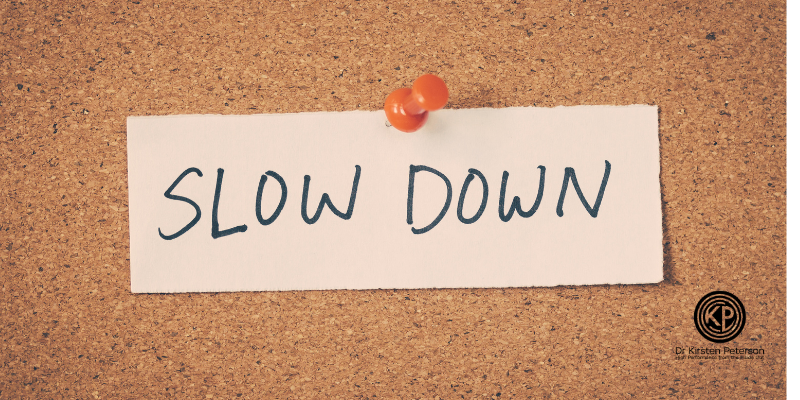What? Is there such a thing?? We spend so much time chasing peak performance that we forget a simple truth: not all moments are high-performance moments. Nor should they be. Right?
Of course I write the blog I need to read. I struggle mightily with the notion that I can and should take better advantage of those low-performance moments in my day. My big problem is one of perceived value. If there are problems to be solved, tasks to be completed, blogs to be written (yes, I know I have not written one in over a month–so sue me.)…and those things are competing against down-shifting, guess what seems more valuable and wins every time? I simply don’t know how to not be in go-mode. Rest feels lazy. Taking my foot off the gas feels less valuable.
But I know, and you do, too—if you don’t know how to down-shift, you’re compromising your ability to perform when it actually matters.
Why We Resist Rest (Even When We Desperately Need It)
Turns out that it’s not just about being busy—there are deep-seated psychological and cultural forces at play:
- The “always-on” myth: Modern work culture glorifies grind and hustle, making us equate rest with weakness
- Survivorship bias: We see ultra-successful people who claim they “never stop,” forgetting that they are the exception, not the rule
- Fear of missing out: Pausing can feel like falling behind. We struggle to trust that slowing down will actually help us go faster when it counts
- Identity attachment: Many high performers define themselves by their output. If they’re not “doing,” they feel like they’re not being.
What we all instinctively know to be true is also supported by high-performance research. Recovery isn’t optional—it’s essential. Studies show that chronic stress and lack of downtime lead to impaired decision-making, lower creativity, emotional volatility, and eventually, burnout.
If you are willing to experiment with this different performance reality, here are some considerations that might help get you over the line.
- Know when to go low. Not every moment demands full intensity. Be strategic—save your energy for when it actually counts. Becoming aware that such moments even exist is a great first step.
- Redefine what “low performance” means. It’s not failure; it’s fueling. These moments are the pit stops that keep you in the race.
- Unpack what’s stopping you. Guilt? Fear of being seen as unproductive? Ask yourself why you resist slowing down. Getting to the stories is the first step to debunking them.
- Trust the process. If you struggle to step back, remember: you are still performing, just differently. This is what allows you to sustain high performance over time.
To this point, thirty years ago, the concept of “recovery” was not a thing in elite sport. When athletes trained too hard, the sport version of burnout was called “overtraining.” No elite athlete wanted to hear that they had to train less. Around this time, the science of recovery became a “thing.” Feeling fatigued? Performance dropping off? Recover harder! This was a message that resonated with athletes used to doing more, more, more.Today, no major sport training center is complete without an entire building devoted to helping athletes recover between training sessions. If recovery is good enough for elite athletes, maybe there’s something in there for the rest of us?
High performance is only possible when you respect your low-performance moments. The key is knowing when to push and when to pause.
How do you take advantage of your low-performance moments?
I’m also on the hunt for good metaphors to describe low-performance moments…I really like the notion, for example, of the race car “pit stop” that keeps you in the race. What are some other ways to think of this that could be helpful?



